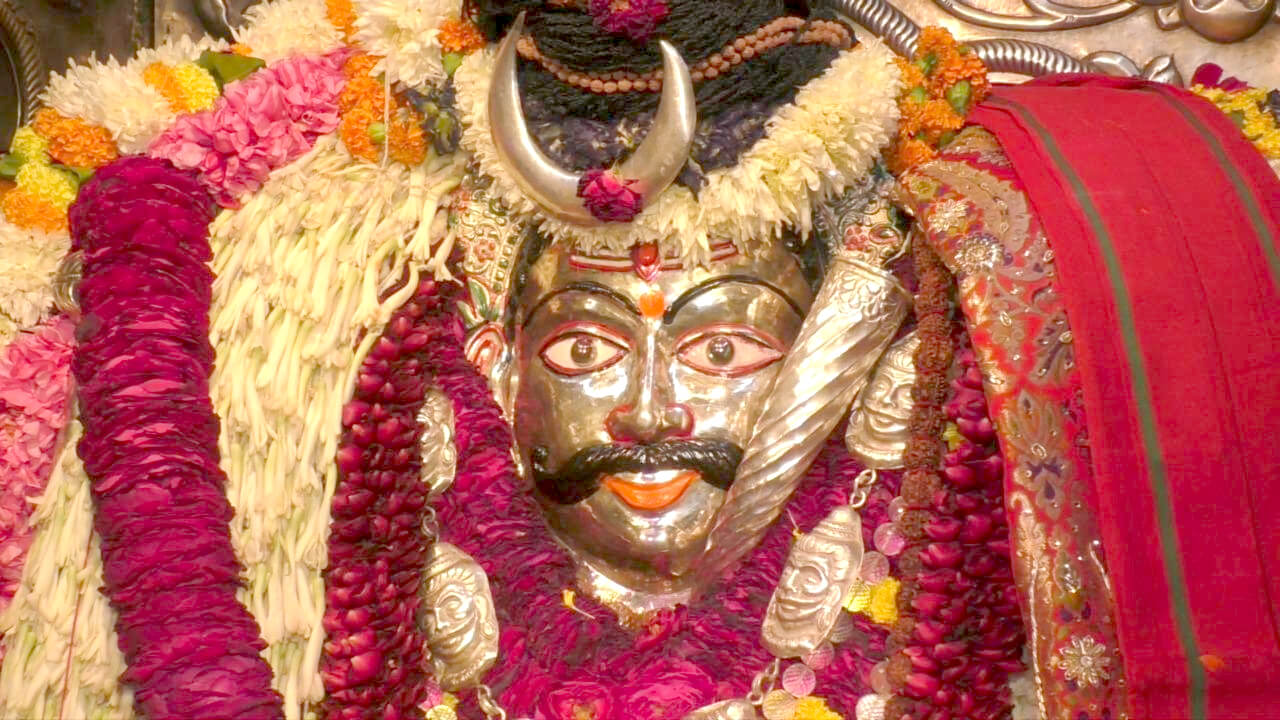
Kaal Bhairav is a fierce manifestation of Lord Shiva. His terrifying appearance, adorned with a garland of skulls and holding a trident, represents the destructive aspect of Shiva. It is believed that by offering prayers and performing rituals here, one can attain spiritual strength and safeguard oneself and one’s family.
Lord Kaal Bhairav is believed to be the guardian deity of Varanasi. He is considered the Kotwal (chief of police) of the city, responsible for maintaining order and protecting the sacred city. Devotees visit the temple to seek Lord Kaal Bhairav’s protection from negative forces, evil influences, and adversities.
The temple is known for its distinctive rituals, which involve offering liquor, betel leaves, and sometimes meat to the deity. These offerings are made as a part of traditional worship and are believed to appease Lord Kaal Bhairav.
History of the Shri Kaal Bhairav Temple
Ancient Roots: Varanasi, one of the oldest continuously inhabited cities in the world, has been a prominent center of Hinduism for millennia. The city has numerous temples and ghats along the banks of the sacred Ganges River. The presence of a temple dedicated to Lord Kaal Bhairav underscores the city’s religious significance.
Mythological Significance: The temple’s history is often associated with the mythology of Lord Kaal Bhairav, who is considered an avatar (incarnation) of Lord Shiva. According to legends, Lord Kaal Bhairav was born during a fierce battle between Lord Brahma and Lord Vishnu. Lord Shiva manifested as Kaal Bhairav to restore the cosmic balance. As Varanasi is considered Shiva’s abode, it is believed that Kaal Bhairav serves as the guardian and protector of the city.
Evolution of the Temple: The temple might have undergone several renovations and reconstructions over the centuries, with various rulers and dynasties contributing to its development. Temples in Varanasi, including the Shri Kaal Bhairav Temple, have historically played essential roles in the cultural and religious life of the city.
Preservation and Pilgrimage: Over the years, the temple has been preserved and maintained by various religious authorities and trusts. It continues to be a significant pilgrimage site for devotees seeking the blessings and protection of Lord Kaal Bhairav.
While precise historical records may be scarce, the Shri Kaal Bhairav Temple’s enduring presence in Varanasi is a testament to its religious and cultural significance. It remains an integral part of the city’s spiritual fabric and continues to draw devotees and visitors seeking solace and blessings from Lord Kaal Bhairav.
Kaal Bhairav Temple Basic Details
How to Reach?
It is a popular pilgrimage site for both locals and tourists, and it attracts devotees throughout the year. The temple is easily accessible by road from various parts of Varanasi.
Distance from various locations from Varanasi
7 km from Shri Kashi Vishwanath Temple,
5 km from Varanasi Junction railway station.
Contact Details of Temple
Temple Address: K-32/22 Bharonath, Vishweshwarganj, Varanasi, Uttar Pradesh 221005
Shri Kaal Bhairav Temple Darshan and Aarti Timings:
The Kaal Bhairav Temple remains open for the devotees 365 days a year with fixed temple Timings. The Kaal Bhairav Temple opens up for the devotees at 5:30 AM in the morning after performing the Mangala Aarti.
Aarti Timings of Kaal Bhairav Temple are as follows :
- Mangala Aarti: 04:00AM
- Bhog/Aarti : 01:00 PM
- Sandhya Aarti: 08:00 PM to 08:30 PM
- Sayan Aarti: 12:00 PM
